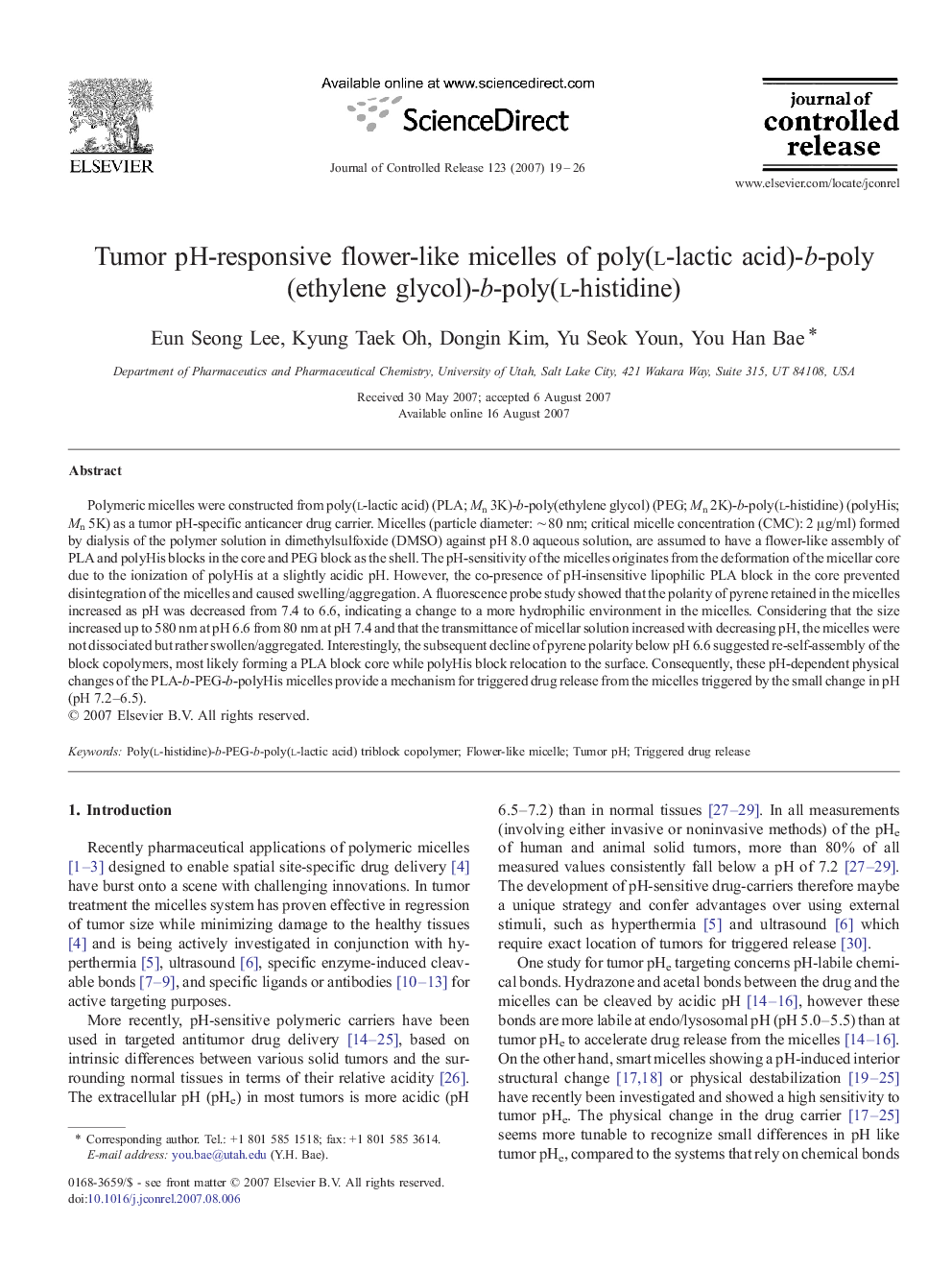| Article ID | Journal | Published Year | Pages | File Type |
|---|---|---|---|---|
| 1427054 | Journal of Controlled Release | 2007 | 8 Pages |
Polymeric micelles were constructed from poly(l-lactic acid) (PLA; Mn 3K)-b-poly(ethylene glycol) (PEG; Mn 2K)-b-poly(l-histidine) (polyHis; Mn 5K) as a tumor pH-specific anticancer drug carrier. Micelles (particle diameter: ∼ 80 nm; critical micelle concentration (CMC): 2 μg/ml) formed by dialysis of the polymer solution in dimethylsulfoxide (DMSO) against pH 8.0 aqueous solution, are assumed to have a flower-like assembly of PLA and polyHis blocks in the core and PEG block as the shell. The pH-sensitivity of the micelles originates from the deformation of the micellar core due to the ionization of polyHis at a slightly acidic pH. However, the co-presence of pH-insensitive lipophilic PLA block in the core prevented disintegration of the micelles and caused swelling/aggregation. A fluorescence probe study showed that the polarity of pyrene retained in the micelles increased as pH was decreased from 7.4 to 6.6, indicating a change to a more hydrophilic environment in the micelles. Considering that the size increased up to 580 nm at pH 6.6 from 80 nm at pH 7.4 and that the transmittance of micellar solution increased with decreasing pH, the micelles were not dissociated but rather swollen/aggregated. Interestingly, the subsequent decline of pyrene polarity below pH 6.6 suggested re-self-assembly of the block copolymers, most likely forming a PLA block core while polyHis block relocation to the surface. Consequently, these pH-dependent physical changes of the PLA-b-PEG-b-polyHis micelles provide a mechanism for triggered drug release from the micelles triggered by the small change in pH (pH 7.2–6.5).
